Transportation
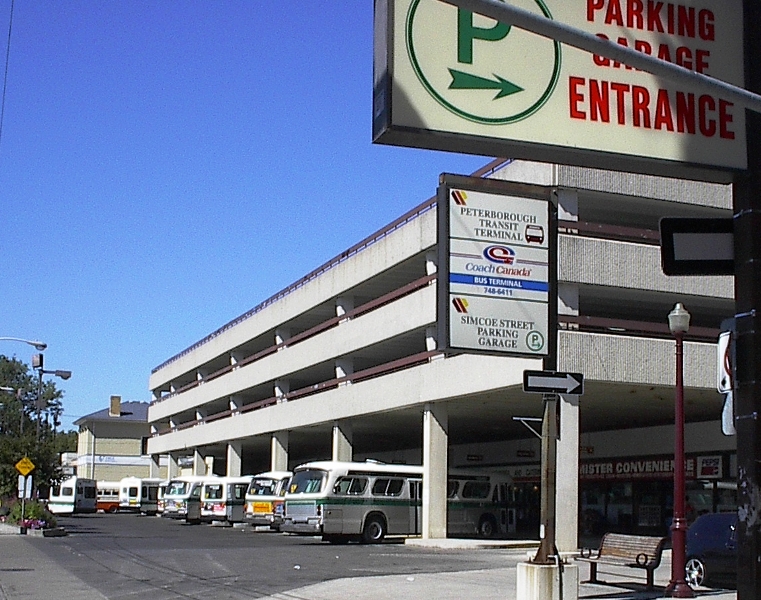
There are several ways to get around Peterborough and the surrounding area.
Driving your own car is one of the most common ways of transportation. The city has a public transit system as well. Walking and biking in warmer months is very pleasant. Peterborough has beautiful walking trails for pedestrians and cyclists.
Driving in Peterborough is not like driving in a large city – we do not experience the traffic jams and congestion of large urban centres. It usually takes less than 40 minutes to get from any point within the city to any other. This makes travelling to work or school, and to do your shopping fairly easy.
How can I get around?
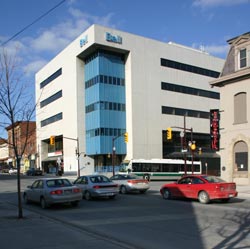
Public transit systems are available for local travel in Peterborough.
If you need to travel between cities or towns in Ontario, you either use public transit, such as the bus or train, or a car. GO Transit provides bus service to Peterborough. The GO bus travels to Oshawa, where there are connections to both GO and VIA trains. The GO buses are equipped with bike racks for your intermodal travelling convenience!
You can travel across North America using the Greyhound bus service. Peterborough’s Greyhound and city bus terminals are next to each other on Simcoe Street.
General guides on travel and public transit within Ontario can be found on Settlement.Org.
How can I travel within Peterborough if I don’t have a car?
Peterborough Transit provides public bus service within the City. Please refer to Peterborough Transit’s fare schedule for pricing.
The buses follow regular routes, each passing through the terminal at 190 Simcoe St. There are bus stops along each route where you may wait for a bus.
If you are not planning on buying a car, you should choose to house close to downtown or on one of the regular bus routes.
You may also use one of the private taxi companies in Peterborough. Taxis are also called “cabs”. Settlement.Org provides more information on travelling by taxi. You can also download URide or YDrive app to get taxi services.
Bicycles, scooters and electric bikes are very popular in Peterborough, especially in the summer. The City has special “bicycle-only” lanes on certain streets. The Peterborough Moves website has information on cycling routes in the City and County. Bicycles must follow all the traffic laws that a car does.
If you live and work in the downtown area of Peterborough, then you may choose to simply walk to get around.
How can I travel between cities?
Peterborough is close to many Ontario cities, including Toronto, Ottawa and Niagara Falls.
Car
Travelling to Toronto by car takes about 1.5 hours. Driving to Ottawa or to Niagara Falls takes about 3 hours. For interactive directions to any other location in North America, visit Google Maps.
Bus
You can travel across North America using the Greyhound bus service. Peterborough’s Greyhound and city bus terminals are next to each other on Simcoe Street. You can also take the GO bus from Peterborough to the Oshawa station, where it connects with the GO train system.
Train
Via Rail provides train service between many Canadian cities. The nearest Via Rail stations to Peterborough are located in Cobourg, Port Hope, and Oshawa/Whitby.
GO Transit provides train service in and around Toronto. You can take the GO bus from Peterborough to the Oshawa station, which connects with the GO train system. The GO terminal is close to the Greyhound and city bus terminals on Simcoe Street.
Air
The nearest major airport is Pearson International Airport in Toronto. Peterborough has airport shuttle services. This service can take or pick you up at the airport and drive you to Peterborough.
Should I bring my car to Canada?
Canada Border Services Agency has prepared a guide to importing a vehicle into Canada. It is often easier and less expensive to buy a car after you arrive in Ontario. Repairing parts for imported cars may be difficult or expensive.
How do I buy a car in Peterborough?
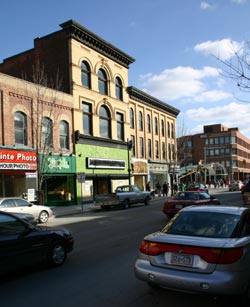
If you want to buy a car, the best way to start can be to talk to your friends or the people you work with. Ask them about their car, how and where they bought the car and how they bought insurance. Talking to other people you know who have already bought cars will be very helpful. Cars can be bought from dealerships, auction sales, or private sellers. To find people selling used cars privately, you can look at websites such as Kijiji, CarGurus.ca or AutoTrader.ca.
For more information on buying a car and the costs associated with owning a car, please see this guide at Settlement.Org.
All cars need license plates, which must be renewed every year just before the owner’s birthday. To register a car or for answers to questions, you can go to the Ministry of Transportation Drivers and Vehicles Office in Peterborough.
To read more about licensing a car in Ontario, see the Ministry of Transportation’s Vehicle Licensing section or the vehicle licensing guide on Settlement.org.
A local expert provided the following information and a list of steps newcomers should take when buying a car in Peterborough:
Every vehicle purchase must be processed at Service Ontario at 300 Water Street. You will need the following information about the vehicle: make, model, year, kilometre reading, and the V.I.N. (Vehicle Identification Number) of the vehicle.
All drivers must have car insurance. Talk to people you know, or use the Yellow Pages to choose an insurance company. Insurance companies can provide you with free insurance estimates. The company you finally chose can give you a temporary insurance coverage letter, which you will need to take to the License issuing office.
Any vehicle you buy must have a valid Safety Inspection certificate and an Emissions Test report showing a ‘PASS’ condition. Payment for the inspection and the test is agreed upon by you and the vehicle seller. A ‘Vehicle History’ package must also be provided to you by the seller.
You will need to bring the following documents to Service Ontario: an insurance coverage letter, safety certificate, test report, ownership of the purchased vehicle, and vehicle history package. Please also bring a form of payment to pay for license plates and sales tax.
How much does it cost to own a car?
Cars can be purchased in many different price ranges. For a basic idea of the prices of different types and ages of cars, see Auto Trader.
There are many costs to owning a car in addition to the price of the car itself. According to Ratehub, the average cost of having a car in Canada is $12,924 a year, not considering the price of the car itself. Expenses include insurance, license plates, parking, gasoline, maintenance and depreciation.
If you buy the car from a dealer, you will need to pay sales tax on the price of the car. When buying a car from a private person, you pay the tax to Service Ontario when you get your license plates.
If the car is used, you will also need to pay for a safety inspection at a government-approved garage and an emissions test at a certified Drive Clean centre.
Every car driven in Ontario must have a valid car insurance policy. You will need to have proof that you have insurance to get license plates. All cars need a license plate, which must be renewed every year before the owner’s birthday. To register a car or for answers to questions, you can go to Service Ontario in Peterborough. To read more about licensing a car in Ontario, see the Ministry of Transportation’s Vehicle Licensing section.
The amount you spend on gasoline will depend on the efficiency of the car and, of course, the amount of driving you to do.
How do I get a driver’s license?
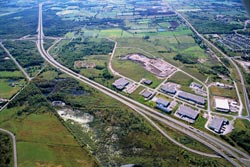
You may use a valid driver’s licence from your home country when you first arrive in Ontario. After 60 days, you will need to have an Ontario Driver’s Licence. For general information, please see the Transportation guide at Settlement.Org.
You may qualify for the license exchange program.
This allows you to exchange your current licence for an Ontario licence without taking a driving test. Staff at the Drive Test Centre can assess your situation and direct you to the next steps.
Even if you do not qualify for a driver’s licence exchange, you may still receive credit for driving experience gained in your home country. The licence exchange program and the Out of Country Drivers information are explained on the Drive Test Ontario website.
Even experienced drivers can benefit from a Driver’s Education Course. Passing the course may reduce your car insurance costs. It can also speed up the process of gaining your Ontario licence. There are driving schools in Peterborough that can provide Driver Education.
What about parking?
Peterborough has ample downtown parking. Parking locations and regulations are listed on the City of Peterborough website. Find the prices for City-operated parking lots downtown.
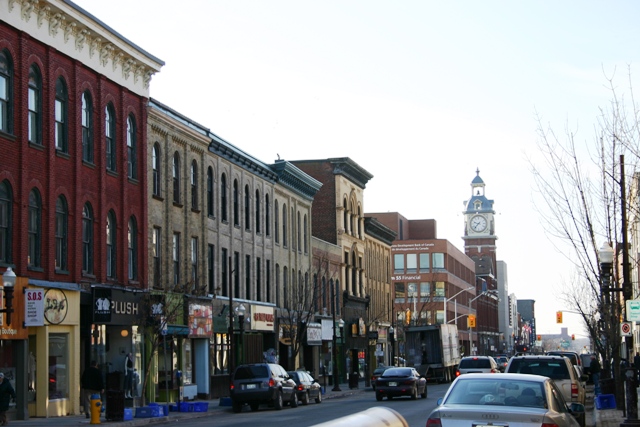
The standard symbol used for parking is a large letter “P”, usually in a green circle. “No Parking” signs show a “P” in a red circle with a red diagonal line.
Basic rules for parking are posted in the online driver’s handbook.
People with physical disabilities may qualify for an Accessible Parking Permit. Permits are provided free of charge through the Ontario Ministry of Transportation.
In the City of Peterborough, there is an Idling Control By-Law. It states that a car may not be left running for more than 2 minutes while parked.
What else do I need to know?

The general rules of the road can be found in the Official MTO Driver’s Handbook. In Ontario, cars are driven on the right-hand side of the road. You must have current car insurance in order to own a car.
If you come from a warm country, you may not know how to drive in our winter’s slippery ice and snow conditions. The Ministry of Transportation has prepared a guide to winter driving that will help you. More winter driving tips can be found on Settlement.Org. If you would feel more comfortable learning with a teacher, you can find a driving school in Peterborough.
The Ministry of Transportation website is a good place to look for information on driving. It provides information on winter road conditions, road closures, construction, and PDF maps of Ontario’s roads.
There are special safety instructions for children travelling in your car. These can be found in the Ministry of Transportation’s “Safe and Secure” article.
